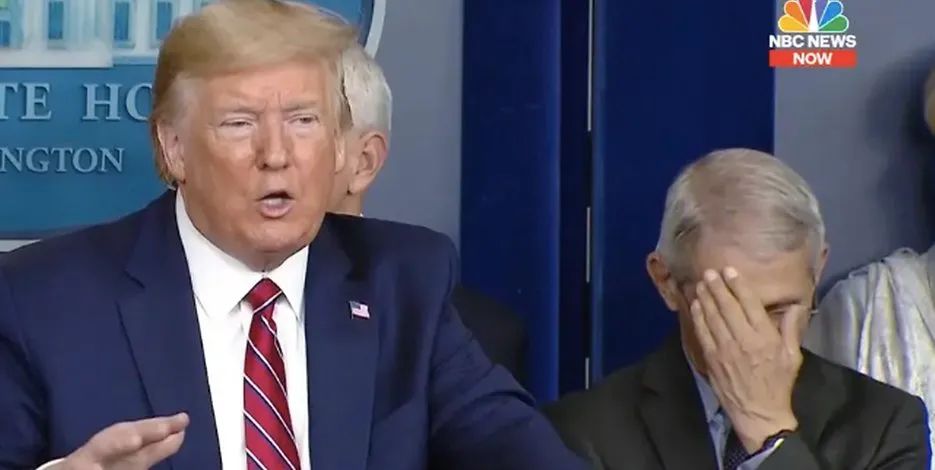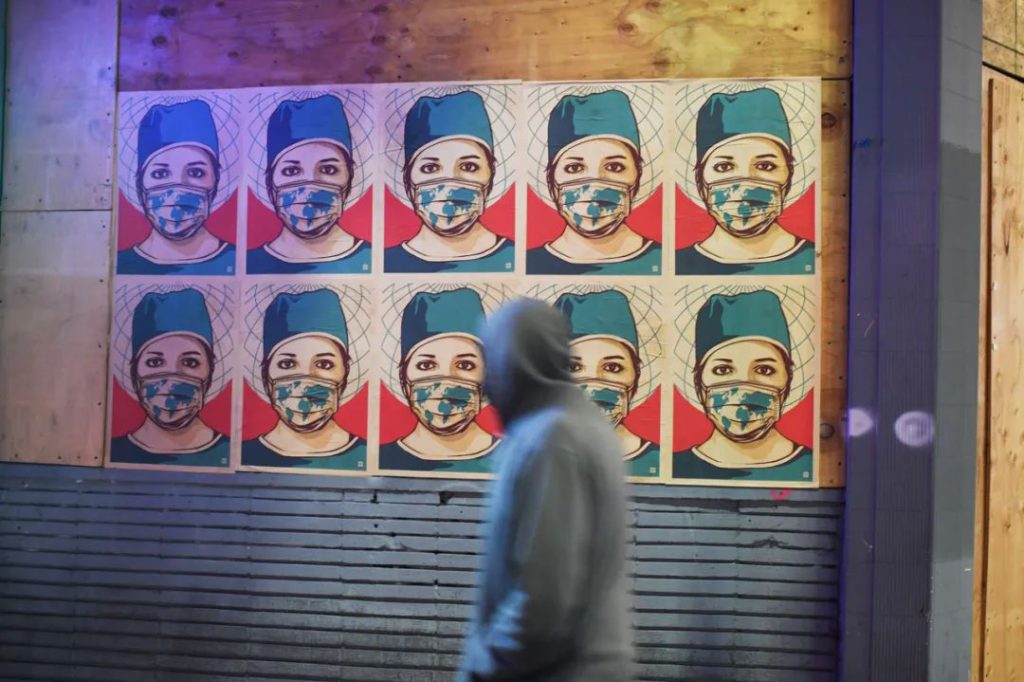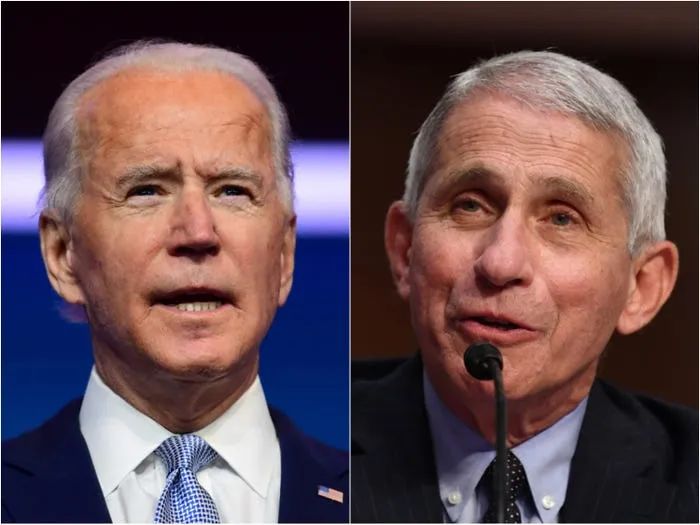U.S. President-elect Biden announced the anti-epidemic team of the new government on the 7th, and Fauci will serve as the chief medical adviser. This means that the “six dynasties senator” will return to the White House to participate in leading the United States’ fight against the epidemic.
The White House may not be the White House soon, but the United States is still the United States at present. As of the 7th, the cumulative number of confirmed cases of COVID-19 in the United States reached 1,888,471, and the number of deaths reached 283,326.
WHO said on the 7th that the United States accounted for one-third of the total number of new cases in the world in the past few weeks.
Can “Old Minister” Fauci and “New Lord” Biden rewrite the bad epidemic in the United States when they join hands to fight the epidemic?
Return of the old face
Among Biden’s new anti-epidemic team, there are many old faces like Fauci.
Javier Becerra, the current Attorney General of California, has been nominated as Secretary of Health and Human Services. Harvard Medical School professor Rochelle Valensky will be the director of the U.S. Centers for Disease Control and Prevention, former Director of Public Health Vivek Murty will again take the post, and Jeffrey Zinz, former director of the White House National Economic Council, will become the “COVID-19 Response Coordinator and Presidential Adviser”.
But among the many old faces, Fauci, director of the National Institute of Allergy and Infectious Diseases, may be the most concerned one. An epidemic has made many Americans remember Fauci’s shouting in a mask, and his helpless look when he stands beside current President Trump to “do different things without each other” – Fauci’s “exit” and “return” are simply a microcosm of the United States’s anti-epidemic.

After accepting the new position, Fauci began to appear in the public eye frequently. He warned yesterday that in line with the current trend of COVID-19 in the United States, mid-January may be a “very dark time”.
The week Fauci took over the olive branch, the epidemic in the United States continued to worsen. Record-breaking cases, hospitalizations and deaths: New infections surged to more than 200,000 for the first time on the 2nd; more than 100,000 people were hospitalized for COVID-19, twice as many as a month ago; nearly 2,900 deaths in the United States on the 3rd, peaking the spring death toll The value pales in comparison.
“What we see now can no longer be described as a curve, more like a vertical rise.” Jennifer Nuzzo, an epidemiologist at Johns Hopkins University, said. In the view of some experts, the expression “hardest-hit areas of the epidemic” is no longer applicable in the United States. There are so many outbreaks of rampant epidemics that it is difficult to point out a particularly bad area.
This situation made Michael Ryan, head of the WHO Health Emergency Project, sigh, “The epidemic in the United States is difficult and protracted, and one or two people die of COVID-19 every minute, which is shocking.” But he also pointed out that the United States actually has a strong health system and technical capabilities.
The weakness is difficult to disappear.
“The virus doesn’t pay attention to political rhetoric or conspiracy theories, and our only hope is science, solutions, and solidarity.” WHO Director-General Tedros Tedros warned.

Science, solutions and solidarity – this is the weakness of the fight against the epidemic in the United States.
The Biden team is trying to solve the first two problems. In terms of fighting the epidemic, he sacrificed the “first fire” last month and announced the establishment of an epidemic working group composed of 12 top scientists to give priority to the response to the epidemic. Compared with Trump, the biggest feature of Biden’s anti-epidemic team seems to be composed of all professionals.
This seems to highlight the core of Biden’s anti-epidemic strategy: listening to science.According to U.S. media, according to Biden’s plan, the CDC will play a greater role, including resuming regular epidemic briefings and giving public health professionals a greater say. Biden and his team of advisers have stressed that they will adhere to the principle of “science above politics” when it comes to the fight against the epidemic.
On the newly established “Transitional Website”, the Biden team also listed the “seven-point anti-epidemic plan”, including “regular, reliable and free (COVID-19) testing” for all Americans, “effective and fair distribution of treatment” once the vaccine is available, and working with governors and mayors to implement “wear masks for all” “Plan and other measures.
But “Unity,” may remain the biggest challenge Biden and Fauci face.
First, the struggle in American politics directly affects policy coordination throughout the United States. According to the media, “from the beginning, 50 states have moved towards 50 different directions of fighting the epidemic”.
This trend is continuing at present. Rebecca Jones, a former health department worker in Florida, recently tweeted that she was recently raided by the police at gunpoint after she was fired for refusing to “manipulate” the state’s epidemic data, and even her mobile phone and computer used to publish the epidemic data were confiscated.
Second, the cooperation of the American people in the fight against the epidemic also affects the effect of the anti-epidemic policy. Young Americans in particular have taken on a surprising “dreadnoughtlessness” in the pandemic.
The “anti-intellectualism” of defiance of science has left some young Americans lacking the cognitive basis for the novel coronavirus. What’s worse is that the politicized fight against the epidemic has adversely guided young Americans, and social ignorance and prejudice have been amplified. Since the outbreak of the epidemic, in the United States, the fight against the epidemic, a professional thing that should be led by science and professionals, has been pan-politicized.
III. In international communication, it is more important to take off “colored glasses” and call for watch and help at the darkest moment. In the fight against the epidemic, cost considerations are undoubtedly a profound knowledge, testing the operation ability of each country’s governance system, but in the face of one life after another, moral driving should exceed the calculation of interests. Francis Fukuyama, a famous American scholar, believes that in the action of epidemic management, the key to evaluating the performance of the government is not the type of government, but the ability of the country, especially the trust in the government.
Biden is scheduled to officially take office in January next year, but no one knows what kind of America he will face at that time.” Whoever enters the White House is not a panacea to end this pandemic.” Irving Redlerner, a public health expert at Columbia University, said, “Hope to work with experts around the world to find out what needs to do to control the epidemic. We are finally going forward.
The epidemic is like a mirror, reflecting conscience, responsibility and responsibility, as well as arrogance, prejudice and ignorance. After all, how could a Fauci or Biden save America?
At this point, the author can’t help sighing that the lonely village does not mourn itself, and Shang Si is the national garrison platform. Poor Fauci, the veteran is late and has the intention to serve the country, but he is afraid that he is unable to return to heaven…



